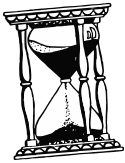Leo Belgicus



Leo Belgicus, latin for den belgiske løve eller den hollandske løve (se nedenfor), er et kort over Nederlandene (Holland og Belgien), tegnet med form som en løve.
Den tidligste Leo Belgicus blev tegnet af den østrigske kartograf Michael Aitzinger i 1583, mens Nederlandene udkæmpede Firsårskrigen for uafhængighed. Motivet var inspireret af den heraldiske løve, som indgår i flere hollandske provinsvåbener og i Vilhelm den tavses våben.
Leo Belgicus kom i tre forskellige grundudgaver. Den almindeligste havde løvens hoved i det nordøstlige hjørne og halen i det sydvestlige. Bedst kendt er nok Claes Janszoon Visschers kort, som blev udgivet i 1609 i anledning af våbenhvilen i krigen (en våbenhvile, der kom til at vare 12 år). En mindre udbredt version havde løven placeret modsat, som det ses i Jodocus Hondius' Leo Belgicus.
Den tredje udgave udkom i slutningen af krigen og efter den westfalske fred (1648), der bekræftede Republikken Nederlandenes selvstændighed. Denne løve kendes også som Leo Hollandicus, den hollandske løve, og viser alene provinsen Holland. En tidlig udgave af denne løve blev udgivet af Visscher omkring 1625.
Om navnet "Leo Belgicus"
I dag benyttes navnet "Belgica" stort set udelukkende om landet Belgien, men før opdelingen af Nederlandene i en nordlig og en sydlig del i det 16. århundrede var det den almindelige latinske oversættelse af "Nederlandene" og blev brugt om hele området. Flere kort over Republikken Nederlandene har således den latinske titel Belgium Foederatum, selv om de ikke har noget med det nuværende Belgien at gøre.[1]
Referencer
- ^ Kortet "Belgium Foederatum" fra 1745 af Matthaeus Seutter Arkiveret 25. august 2012 hos Wayback Machineviser således det nuværende Nederlandene.
Eksterne henvisninger
| Spire Denne historieartikel er en spire som bør udbygges. Du er velkommen til at hjælpe Wikipedia ved at udvide den. |
Medier brugt på denne side
Belgian Lion or Dutch Lion. The Latest and Most Accurate Description of the Lion of Belgium, or the Seventeen Regions, by the author Claes Janszoon Visscher.
Leo Hollandicus, 1648. The most famous of all cartographic curiosities is the ‘Leo Belgicus’, in which the Seventeen Provinces of the low Countries were depicted in the form of a lion. This type was first introduced by Michael Eitzinger (Aitzinger or van Aitzing) in 1583. The idea may have suggested to him by the presence of a lion in the arms of most of the Seventeen Provinces. Whatever his inspiration, the genre proved very popular, and a number of later publishers produced their own versions, some even introducing their own sub-type.
One such group was the ‘Leo Hollandicus’, where the Seven United Provinces were depicted as a lion. Claes Jansz. Visscher was the first to publish such a map, as shown here.
Since Aitzinger had published his prototype, the political situation had altered considerably. The Provinces has risen in revolt against the Spanish, who succeeded in subduing the southern provinces, but not the seven northern provinces. The Revolt was suspended during the Twelve Years Peace (1609-1621), before resuming, and continuing to 1648, when the Dutch Republic established its independence.
Visscher seems to have first published the map before 1625, the year in which the dedicatee Prince Maurice died. A second example was published dated 1633, while the third state was published in 1648, when the Spanish confirmed Dutch independence.
The map captures the spirit of the young country: its civic pride, with the fine vignette views of the principal cities, the entreprenurial spirit, with the depictions of the iceboat and land yacht, while the lion, standing on its hindlegs, with the large sword bearing the motto ‘PATRIAE DEFENSIO’. The ‘Leo Hollandicus’, therefore, reflects the new independence, patriotism, spirit of defiance and optimism of the Dutch Republic, and this engraving apparently proved a popular encapsulation of the popular feeling of the day.
Further reading: Heijden, H.A.M. van der Leo Belgicus An illustrated and annotated carto-bibliography (Alphen aan de Rijn: 1990), section F describing the ‘Leo Hollandicus’, this map no .23.3.


